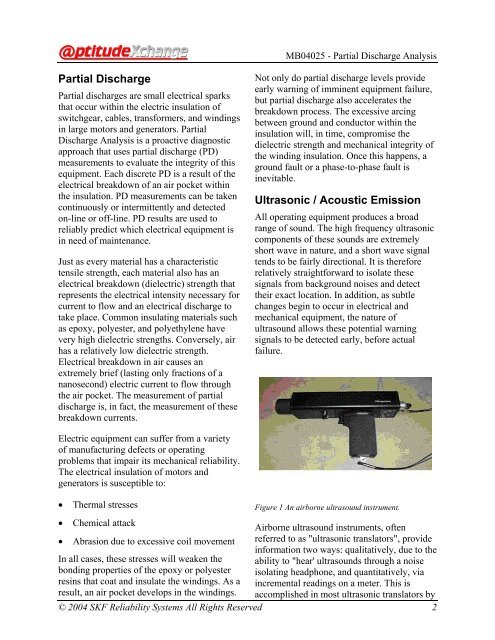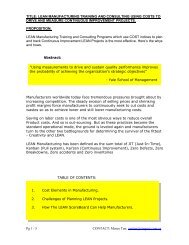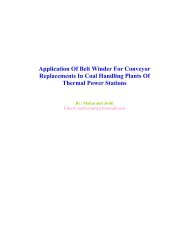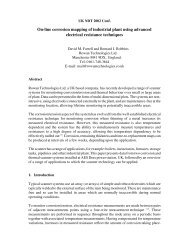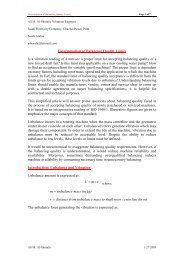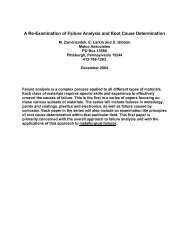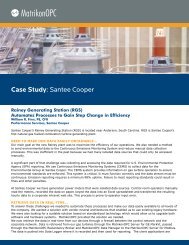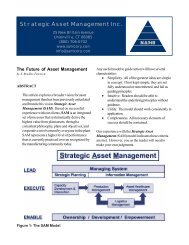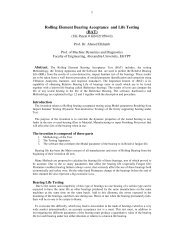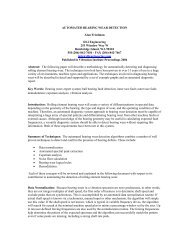Partial Discharge Analysis
Partial Discharge Analysis
Partial Discharge Analysis
Create successful ePaper yourself
Turn your PDF publications into a flip-book with our unique Google optimized e-Paper software.
MB04025 - <strong>Partial</strong> <strong>Discharge</strong> <strong>Analysis</strong><strong>Partial</strong> <strong>Discharge</strong><strong>Partial</strong> discharges are small electrical sparksthat occur within the electric insulation ofswitchgear, cables, transformers, and windingsin large motors and generators. <strong>Partial</strong><strong>Discharge</strong> <strong>Analysis</strong> is a proactive diagnosticapproach that uses partial discharge (PD)measurements to evaluate the integrity of thisequipment. Each discrete PD is a result of theelectrical breakdown of an air pocket withinthe insulation. PD measurements can be takencontinuously or intermittently and detectedon-line or off-line. PD results are used toreliably predict which electrical equipment isin need of maintenance.Just as every material has a characteristictensile strength, each material also has anelectrical breakdown (dielectric) strength thatrepresents the electrical intensity necessary forcurrent to flow and an electrical discharge totake place. Common insulating materials suchas epoxy, polyester, and polyethylene havevery high dielectric strengths. Conversely, airhas a relatively low dielectric strength.Electrical breakdown in air causes anextremely brief (lasting only fractions of ananosecond) electric current to flow throughthe air pocket. The measurement of partialdischarge is, in fact, the measurement of thesebreakdown currents.Not only do partial discharge levels provideearly warning of imminent equipment failure,but partial discharge also accelerates thebreakdown process. The excessive arcingbetween ground and conductor within theinsulation will, in time, compromise thedielectric strength and mechanical integrity ofthe winding insulation. Once this happens, aground fault or a phase-to-phase fault isinevitable.Ultrasonic / Acoustic EmissionAll operating equipment produces a broadrange of sound. The high frequency ultrasoniccomponents of these sounds are extremelyshort wave in nature, and a short wave signaltends to be fairly directional. It is thereforerelatively straightforward to isolate thesesignals from background noises and detecttheir exact location. In addition, as subtlechanges begin to occur in electrical andmechanical equipment, the nature ofultrasound allows these potential warningsignals to be detected early, before actualfailure.Electric equipment can suffer from a varietyof manufacturing defects or operatingproblems that impair its mechanical reliability.The electrical insulation of motors andgenerators is susceptible to:• Thermal stresses Figure 1 An airborne ultrasound instrument.• Chemical attackAirborne ultrasound instruments, often• Abrasion due to excessive coil movement referred to as "ultrasonic translators", provideinformation two ways: qualitatively, due to theIn all cases, these stresses will weaken the ability to "hear' ultrasounds through a noisebonding properties of the epoxy or polyester isolating headphone, and quantitatively, viaresins that coat and insulate the windings. As a incremental readings on a meter. This isresult, an air pocket develops in the windings. accomplished in most ultrasonic translators by© 2004 SKF Reliability Systems All Rights Reserved 2


